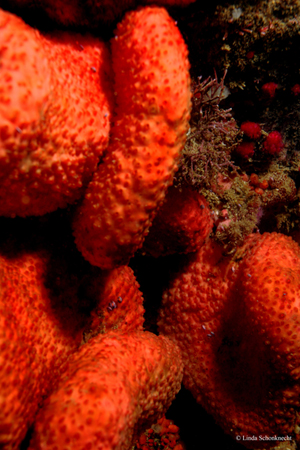Considered the oldest multicellular animals, marine sponges are found in many tropical reef ecosystems. Unable to move from their positions on the seafloor, marine sponges can filter 24,000 liters of seawater per kilogram of sponge daily and as much as 60 percent of their biomass can be composed of microorganisms, many of which are being studied for a number of medical applications.
Among the microorganisms found in sponges are halorespiring bacteria. These bacteria play a key role in breaking down halogenated pollutants in anaerobic ecosystems such as subsurface soils and marine sediments. Halorespiring bacteria also play an as-yet poorly understood role in the global carbon cycle.
Researchers are interested in learning more about the relationships between the microorganisms and their host sponges, and their roles in global cycles such as the carbon cycle and carbon sequestration. By sequencing and identifying bacteria from marine sponges Corticium candelabrum, Petrosia ficiformis and Halichondria panicea, researchers hope to learn if the compounds in the spongesinvolve enzymes that might be used to treat sites contaminated with dioxins, pesticides such as DDT, and other compounds found in coolants and lubricants. The pesticide DDT is of concern for example, because it accumulates in animal fat tissue, harming the body, and can damage ecosystems.

Photo:Linda Schonknecht 2007/Marine Photobank
Principal Investigators: Hauke Smidt, Wageningen University
Program: CSP 2010